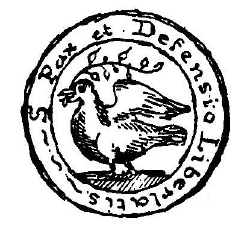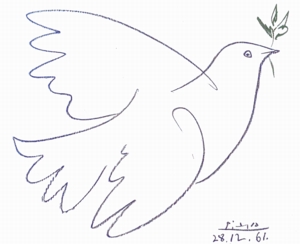
Images of Liberty and Power
[Created November 12, 2010]
[Updated June 12, 2011]
[Updated June 12, 2011]
 |
 |
The seal of the Magistrates of the Ten
of Liberty and Peace of the City of Florence (c. early 1500s) |
Picasso's iconic drawing of the Dove of
Peace (1961) |
| Observations on Peace and Liberty: In early 16th century Florence, when Niccolo Machiavelli was working as a diplomat for the city state, the seal of the Magistrates of the Ten of Liberty and Peace was an image of a dove holding an olive branch in its beak with the following Latin motto "Pax et Defencio Libertatis" (Peace and the Defence of Liberty). [It can be found in volume 3 of Machiavelli's Historical, Political, and Diplomatic Writings at the Online Library of Liberty.] The link between "peace and liberty" is thus one that goes back several centuries at least. When the English philosopher John Locke received a French translation of the second part of his Two Treatises, called Du gouvernement Civil (c. 1691), he wrote in his own hand the following Latin phrase on the title page: "Pax ac libertas" (Peace and Freedom) - the only known time he added anything to the title page of one of his books. The dove of peace has become one of the iconic images of the post-war peace movement thanks largely to Picasso. In a 1949 poster he shows a life-like dove with feathery feet (see below) but by 1962 he had developed a more stylised outline of a dove carrying a sprig of leaves in its beak which subsequently became better known. In this collection of images we will explore the relationship between "Peace and Liberty" on the one hand, and "War and Power" on the other. | |